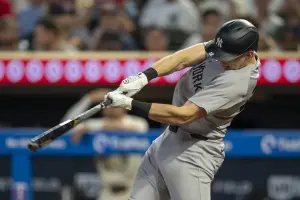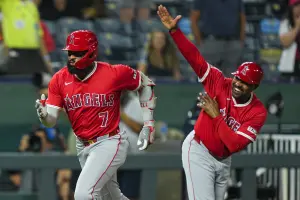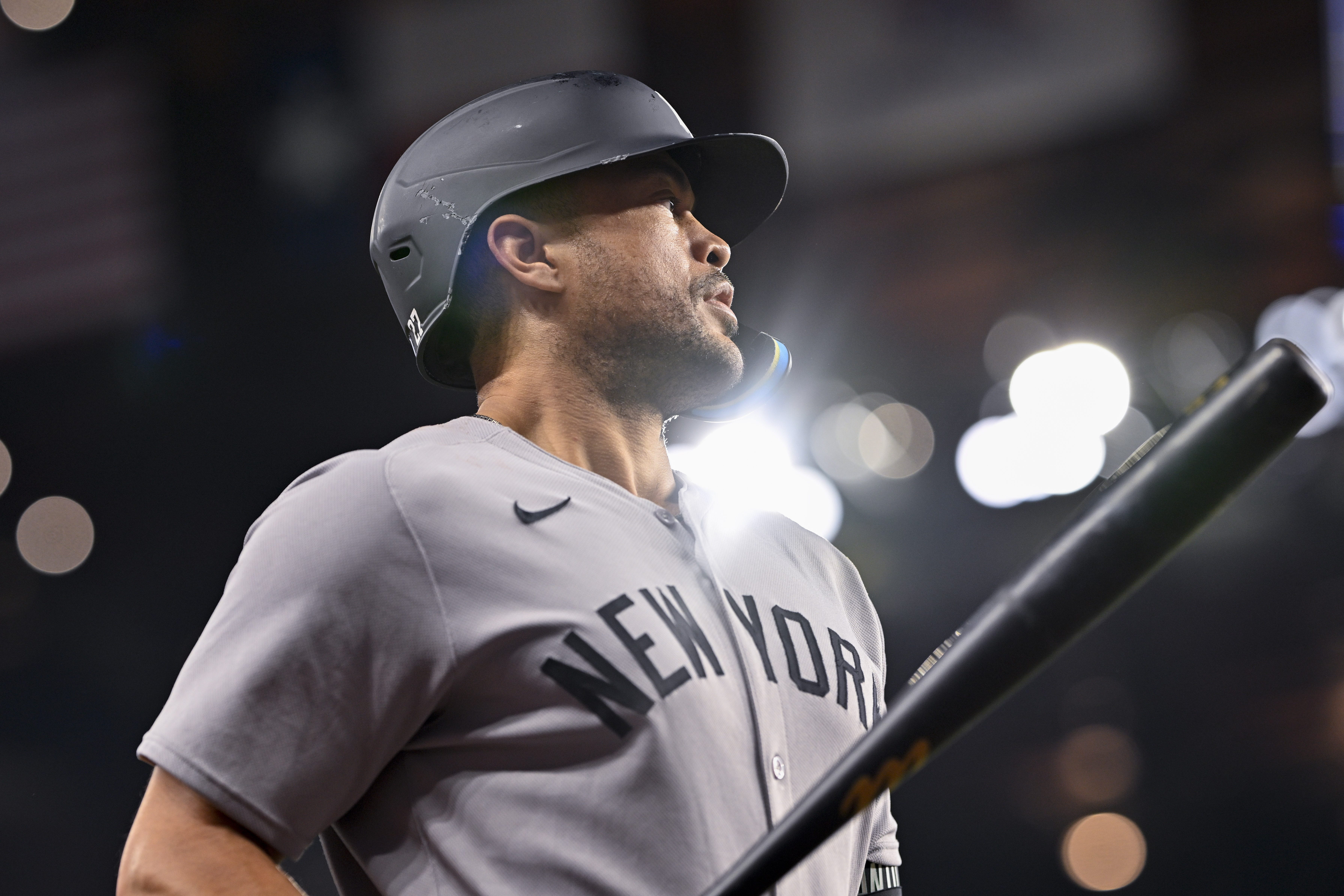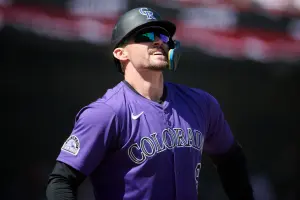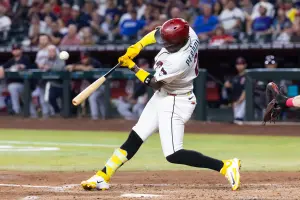
(*) BATTERS: A recipe for non-roster invitee success
Their signings generate little fanfare. They aren't expected to make the Opening Day roster, let alone make an impact during the season. In most cases, the best they can hope for is a bench role and another chance to chase some small measure of success in The Show. And yet, every year scores of MLB veterans sign non-guaranteed minor league contracts that bring with them that special caveat: An invitation to spring training.
The list of non-roster invitees (NRIs) each season is always chock full of prospects, prized and otherwise, but for the purposes of this article, we're focusing only on the failed prospects and the grizzled veterans. The idea is to mine some potential value from this year's NRI crop of hitters.
Before you scoff at the notion, remember the past. In 2012, four NRIs not only earned significant playing time with the big club, but they excelled and returned positive value both on the diamond and in fantasy: Brandon Moss (OF, OAK); Justin Ruggiano (OF, MIA); Juan Pierre (OF, then with PHI); and DeWayne Wise (OF, CHW).
Is there something that can learned from these players that will help in predicting what hitters can be a factor in 2013? This is an admittedly miniscule sample, but there are some instructive common elements. All of these players prior to 2012:
- were 28 or older;
- had accrued at least 175 MLB ABs, with multiple big-league seasons;
- and had demonstrated at least 100+ PX and/or Spd scores, along with complementary batting/baserunning skills, in their MLB history.
Guided by this set of loose criteria, the Batter Buyer's Guide endeavors to isolate 2013's top NRI fantasy wild cards:
Familiar faces
Finally given a chance at a starting job out of spring training last year in Detroit, Ryan Raburn (2B/OF, CLE) fell on his face and endured his worst season as a pro. But Raburn brings with him a track record of above average skills. From 2007 through 2011, he posted a PX of 135 or better in four of five years, while carrying Spd of 107+ in all seasons. Don't count on many SBs, but the power is real and at 32 years old, it's unlikely his poor 2012 was age-related. The Indians have some questions in their lineup, so Raburn's power and ability to play IF and OF gives him a fighting chance to earn a significant share of ABs.
When it comes to evaluating 34-year-old Miguel Olivo (C, CIN), owners must answer one question: Do the negatives (poor ct%, nonexistent bb%, age) overshadow the positives (solid PX and health)? If Olivo were playing anywhere but in Cincinnati then the answer might be "yes." But Great American Ballpark and its favorable power hitting environment (+43% RHB HR) is a perfect match for Olivo's lone remaining plus skill. The Reds have two other options at catcher, but an early Olivo power surge could lead to the Reds re-shuffling their depth chart.
Do the Rays want Shelley Duncan (OF, TAM) and his career .217 BA vs RHP in the lineup every day? Probably not. But his career .720 OPS vs RHP shows he's not useless and his plus PX and strong bb% provides some value to a club that needs to find ways to score runs. Duncan clubbed 11 home runs in 232 ABs or less each of the past three seasons, so he generates offense even in a reduced role. The Rays have spun straw into gold before, so keep an eye on Duncan if earns a roster spot this spring.
The Rays are rolling the dice with another veteran invitee, Jason Bourgeois (OF, TAM). He's consistently shown a strong ct%, while flashing above average bb% at times, but his wheels are the moneymakers for Bourgeois. His Spd isn't elite so much as solid, yet his SBO% is terrific so he can pile up SBs in limited PT as he did in 2011 when he swiped 31 bags in just 238 ABs. Bourgeois' ct% and Spd keeps his BA floor higher than most and the Rays have shown in the past that they are willing to give one dimensional speed demons like him significant PT (see: Sam Fuld). If any NRI has a chance to come out of nowhere and steal 50 bases, it's Bourgeois.
Failed prospects
Some folks considered Jason Pridie (OF, BAL) to be a deep sleeper last season, but he only got a handful of ABs with Phillies. Yet Pridie showed some potential for more across 208 at bats with the Mets in 2011, demonstrating above average PX and Spd. Pridie has had ct% issues and inconsistent bb% in the high minors, but he's delivered double digit HRs and solid SB totals as well. Baltimore has stability in CF and RF, but competition in camp will determine the starter in LF and Pridie's power/speed combo could open some eyes. Baltimore has a lot of veterans vying for just a few open roster spots, so Pridie is a longshot. But he's got fantasy upside if he earns a job.
We're bending the rules by including 27-year-old Nick Evans (1B/OF, LA), but considering that LA is his third organization in the last year and a half, it feels right. There was a time when Evans looked to be a part of the Mets' future, having enjoyed some success in the big leagues in parts of four straight seasons before being cut loose in 2011. Evans has a weak Eye and has struggled to make contact, but he has nice PX that gives him some decent HR upside. LA has lots of star power in that lineup, but depth and injuries have been an issue. So if Evans slugs his way into a bench role, he may get a chance to make an impact this season.
For a few years, it seemed Kila Ka'aihue (1B, ARI) was the 1B of the future in Kansas City. While Ka'aihue never broke through in his abbreviated MLB stints, he did show the bb% and PX that made him an extremely successful hitter in the upper minors. Ka'aihue hasn't hit well in the big leagues yet, though he actually handles LHP better than RHP. It will likely take a huge performance in March and possibly some unfortunate results for others to open up a roster spot for Ka'aihue, but if he gets an opportunity in the desert he has the power and patience to generate fantasy value.
Just for fun
While mostly unremarkable as an MLB starting pitcher, Micah Owings (1B/P, WAS) has always been exciting at the plate. Owings is threatening to become the rarest of commodities: the utility hitter/pitcher. Owings has said he envisions himself pitching out of the bullpen and making the occasional start, while also providing a power bat off the bench. In 205 big league ABs, Owings has a .812 OPS while flashing huge PX and above average Spd as well. He has major ct% issues and a dire bb%, but a lot of that can be attributed to a raw, unrefined approach that saw him swinging out of his shoes in his few ABs a week. The odds of someone like Owings becoming even an average major league hitter at this stage are not good, but Washington is giving him a chance so it will be interesting to watch. Should he make the team and provide fantasy value as both a pitcher and a batter, he could offer unique value to owners while becoming a total nightmare for fantasy scoring engines.
For definitions and benchmarks of BaseballHQ.com's most-used terms, see our Glossary Primer.


